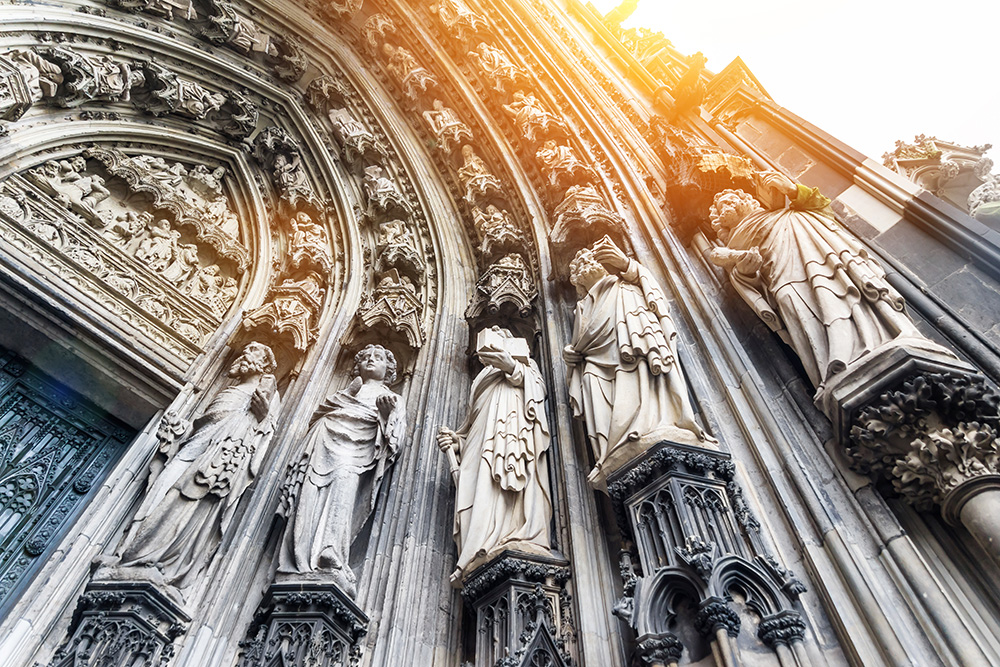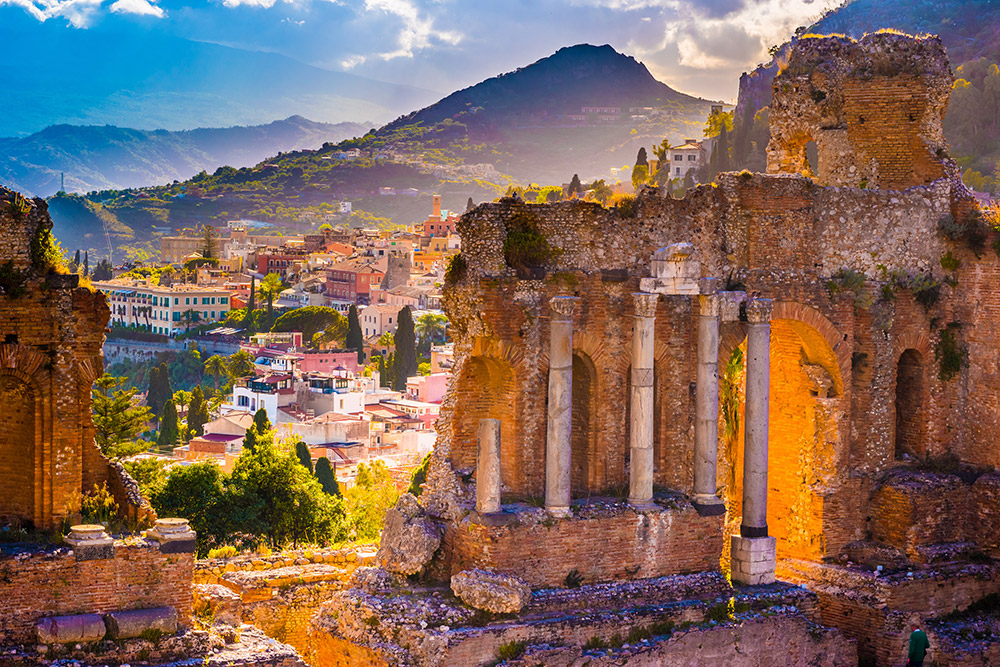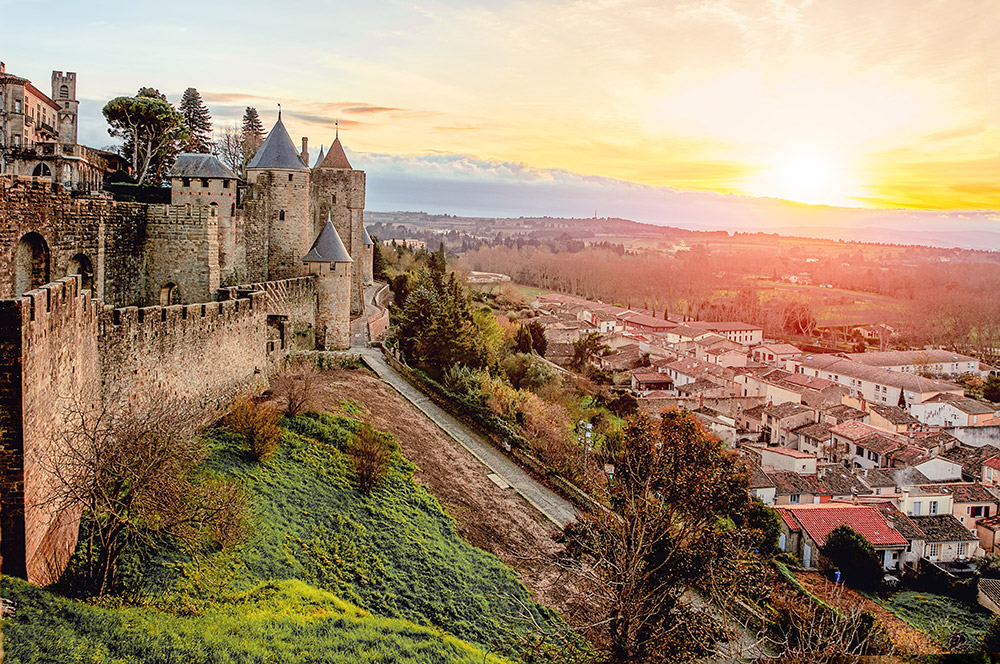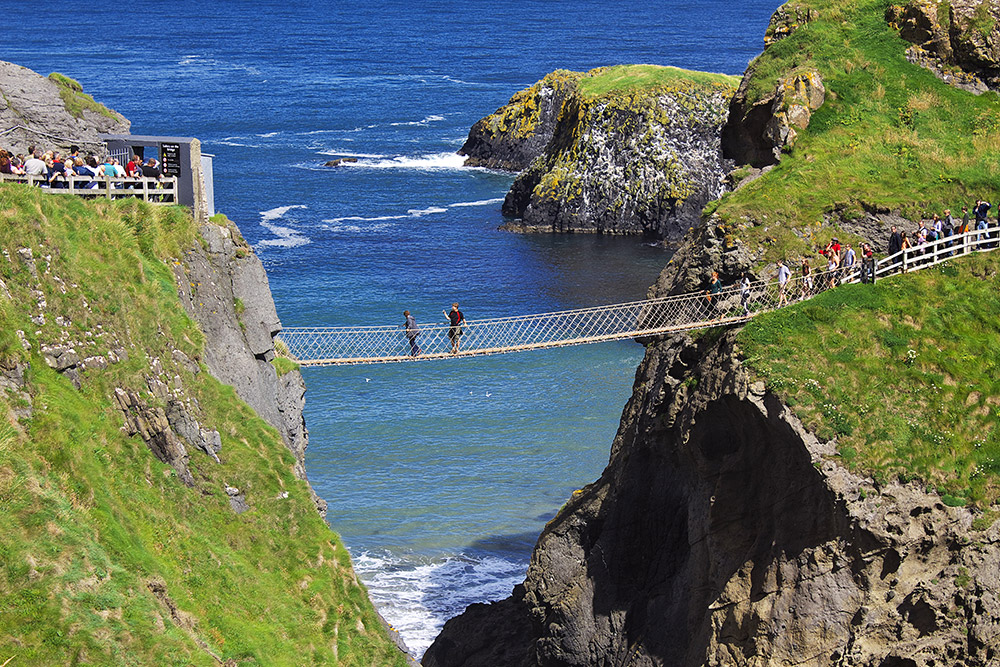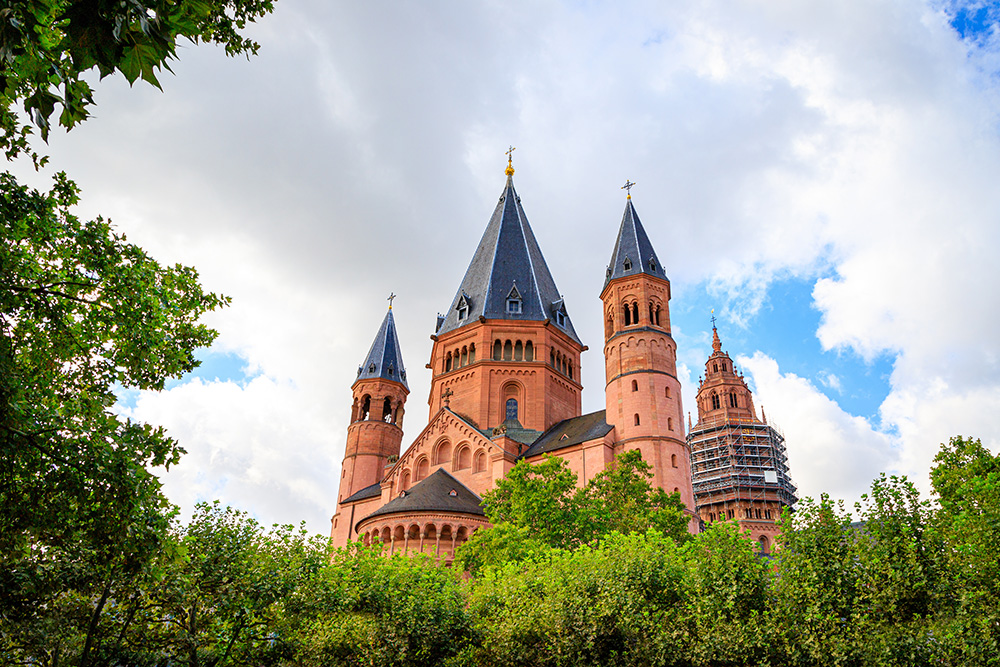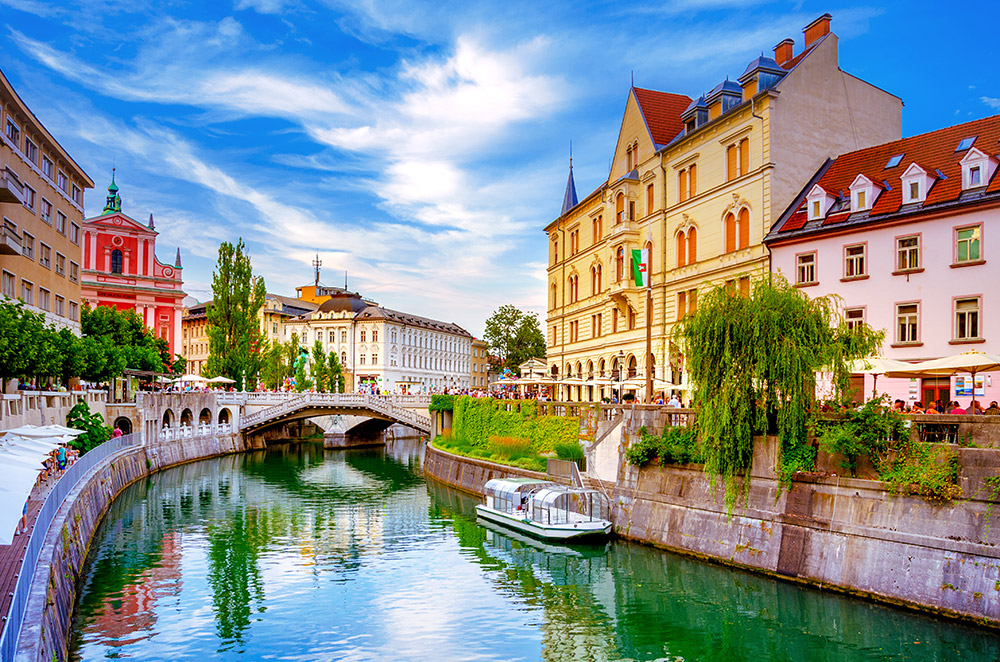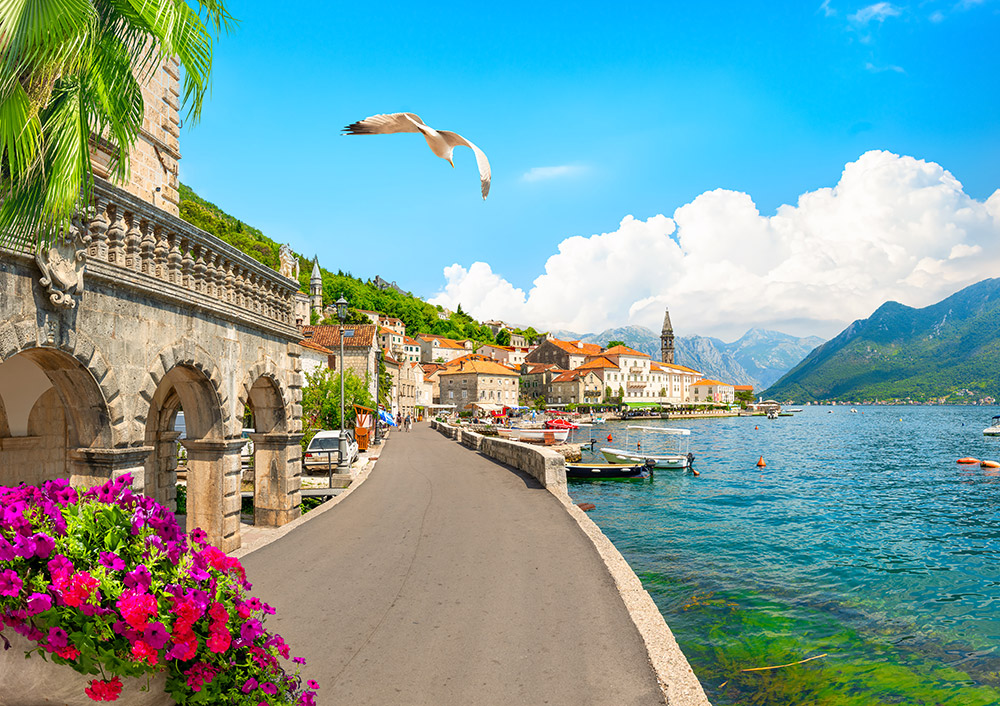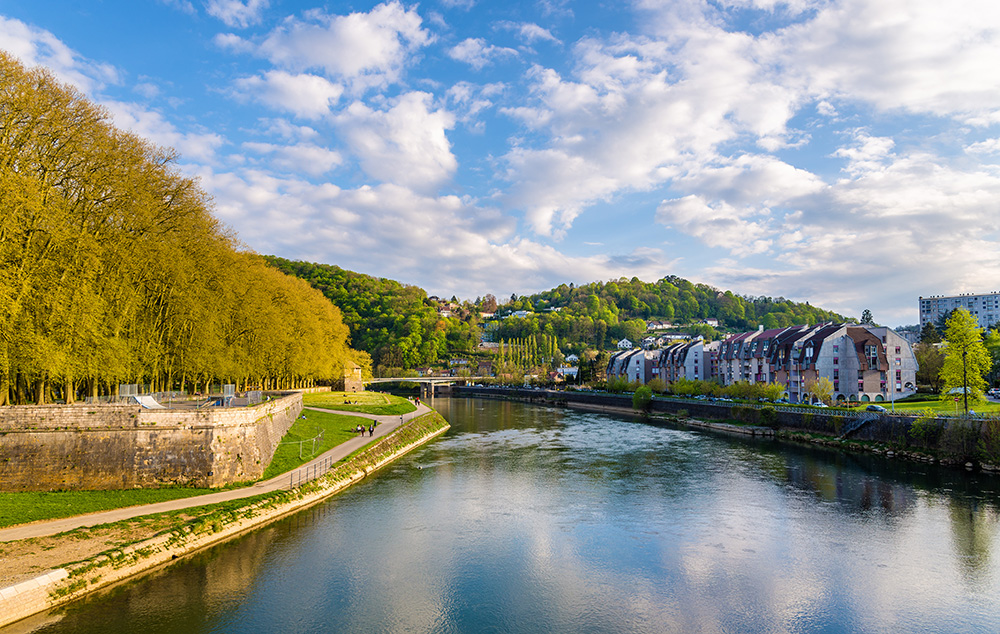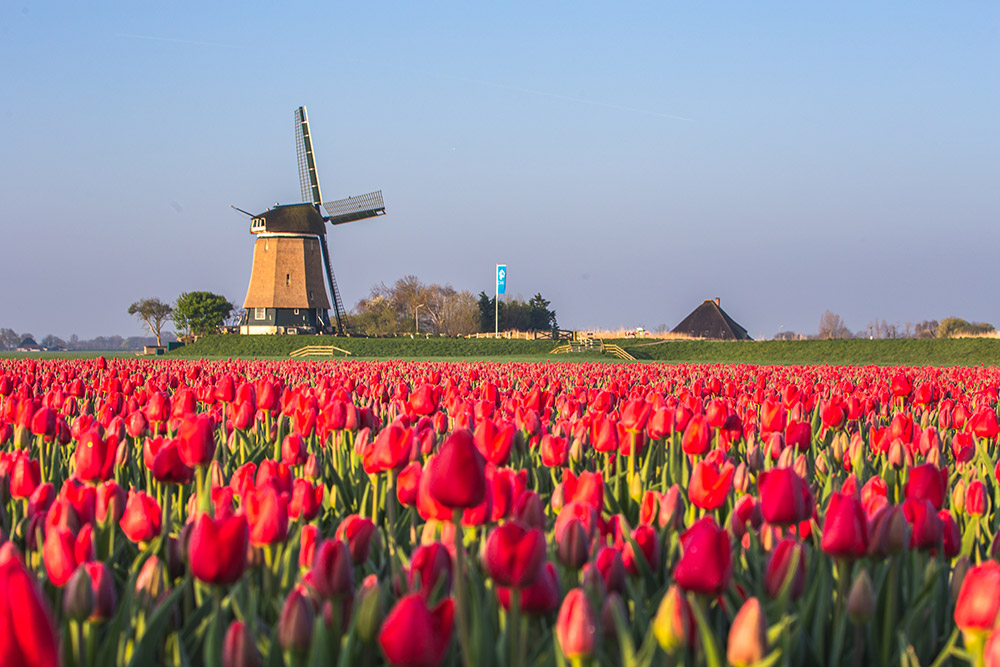Popular itinerary for Exploring History and Culture in Germany:
Days 1 and 2: Cologne
The journey begins in the city of Cologne (Köln), located on the banks of the Rhine River. It is a city steeped in history, with a history dating back over two thousand years. In the year 50 AD, the Romans laid the foundations of “Colonia Claudia Ara Agrippinensium,” and within just a few years, it evolved into a vibrant and thriving center. Positioned strategically on the banks of the Rhine River, Cologne became a significant hub for trade, culture, and military activities.
Throughout the medieval period, Cologne flourished as a key trading center within the Hanseatic League—a league of cities that aimed to facilitate trade and cultural exchanges across the Baltic Sea and Northern European regions. During this time, the magnificent Cologne Cathedral was built, housing the remains of the Three Wise Men: Caspar, Melchior, and Balthazar.
Cologne suffered severe damage and destruction during the Thirty Years’ War (1618-1648), a conflict marked by religious and political tensions that pitted Catholic forces against Protestants. The city endured sieges, battles, and substantial economic decline during this turbulent period. In World War II, Cologne faced intense bombings that targeted its historical center, resulting in damage to the cathedral, as well. However, the city rebounded, and its architectural wonders were meticulously restored.
As you wander through the cobblestone streets of the old city, you’ll see remnants of ancient Roman walls, medieval landmarks, and Romanesque churches. Today, Cologne is a modern and lively metropolis with numerous museums, points of interest, and cultural events.
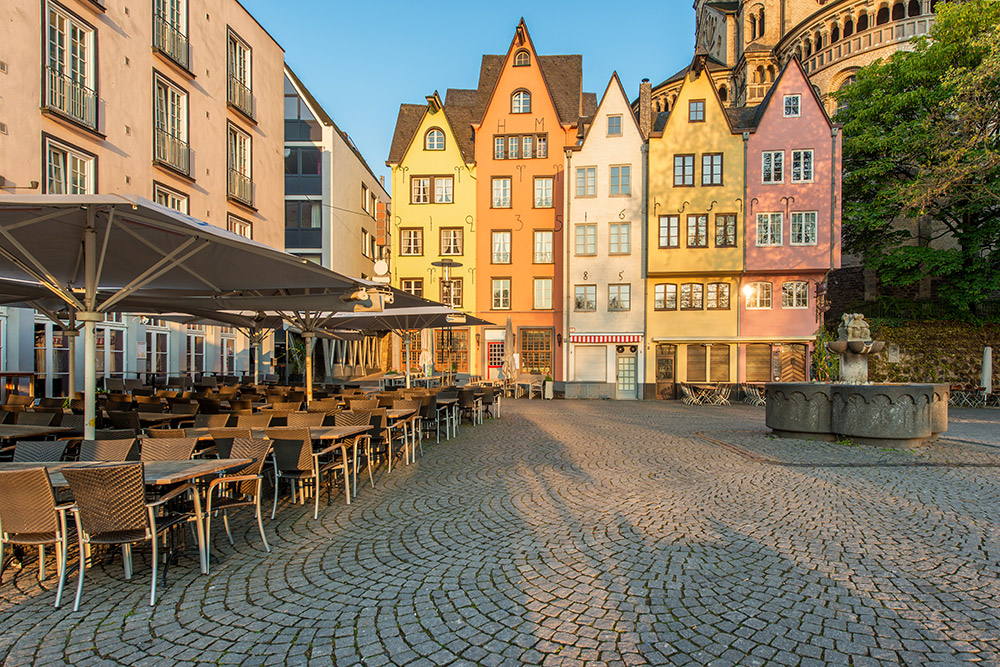
Here are some suggested museums and attractions to explore while you’re in Cologne:
The Roman-Germanic Museum (Römisch-Germanisches Museum) is dedicated to the Roman heritage of Cologne, showcasing a fascinating array of artifacts, from mosaics and ancient sculptures to remnants of Roman architecture.
The Ludwig Museum houses a fantastic collection of modern and contemporary art from the 20th and 21st centuries, including masterpieces by renowned artists such as Andy Warhol, Roy Lichtenstein, and Pablo Picasso.
The Wallraf-Richartz Museum showcases European art from the Middle Ages to the early 20th century. It includes works by famous artists such as Rembrandt, Rubens, and Dürer, providing a comprehensive overview of European art history.
The Museum für Angewandte Kunst (Museum of Applied Arts) houses a diverse range of functional art items, including ceramics, textiles, furniture, and design objects. The collections span various periods and cultures, illustrating the evolution of art and design.
Farina Duftmuseum (The Farina Fragrance Museum) brings the world of perfumery to life at the birthplace of the renowned Eau de Cologne. The museum offers a fascinating look into the art of perfume-making throughout the generations, exploring the origins of this fragrance and its creation by Giovanni Maria Farina.
Cologne offers a diverse array of offerings in the realms of music, theater, and festivals. The Cologne Philharmonic Orchestra and the Opera House are central venues for classical concerts, opera performances, and contemporary productions. The city’s diverse music halls cater to various tastes.
And, of course, don’t miss the opportunity to savor the local beer: Kölsch, exclusively brewed in Cologne, served in slender glasses known as “Stangen” or cylindrical glasses.
Spend both nights in Cologne.
Day 3: From Cologne to Aachen
A journey of approximately 50 miles along Highway 4 leads us to the capital of the Carolingians: Aachen, the city of Charlemagne. Born in the 8th century, Charlemagne ascended to the throne, expanding his empire across Western Europe through alliances and conquests. Beyond being a conqueror, Charlemagne was a visionary leader who initiated a period of cultural revival, fostering learning and the arts throughout the empire. His unwavering support for education and literature left an enduring imprint on history.
Choosing Aachen, originally a Roman spa city named “Aquae Granni,” as the empire’s main residence, Charlemagne established the law and government for generations. Aachen played a pivotal role, hosting the empire’s administration from the Palatine Chapel, an annex of the cathedral. The octagonal-shaped chapel is a masterpiece adorned with mosaics depicting scenes from the Old and New Testaments, and it houses Charlemagne’s throne in a niche. This chapel is part of Aachen Cathedral, serving as a testament to his influence and remaining the coronation site for German kings for nearly six centuries.
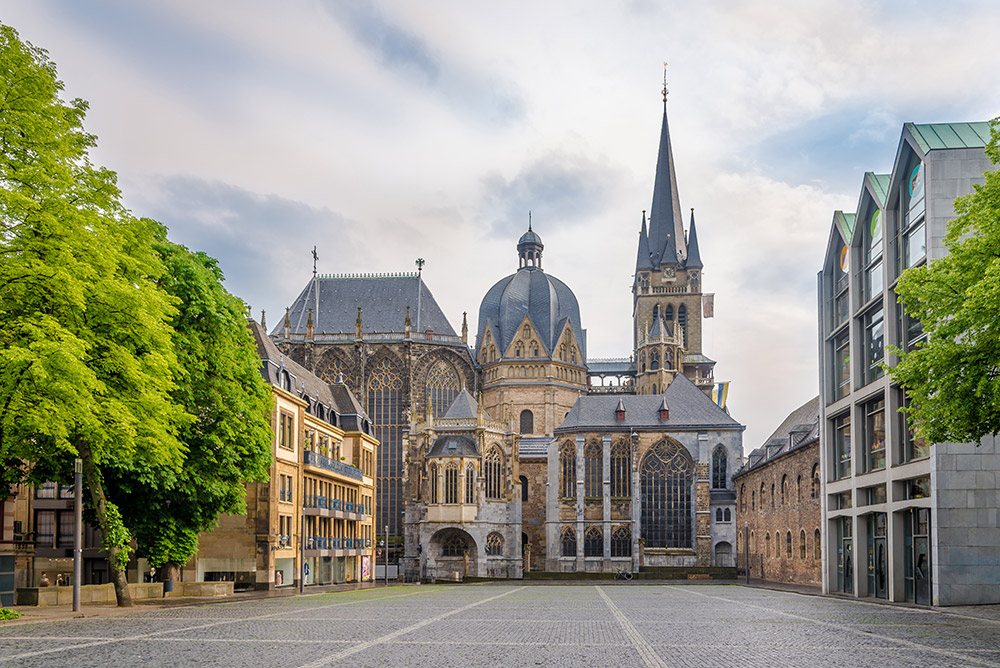
The Aachen Cathedral Treasury houses a remarkable collection of relics and artifacts, featuring ornamented crosses, ancient manuscripts, golden sculptures, and relic boxes containing the remains of Charlemagne and saints.
The Suermondt-Ludwig-Museum showcases an impressive collection of art spanning from the Middle Ages to the modern era. Taking visitors on a historical journey through European art, the museum presents diverse artistic expressions and cultural trends. The museum originated from the collections of Barthold Suermondt and Henry Ludwig, inviting visitors to explore a rich variety of arts, including works by renowned artists such as Rubens, Rembrandt, and Dürer.
Day 4: From Aachen to Trier
We will embark on a journey through the picturesque Eifel forests, known in Germany as the “Eifel Mountains,” heading towards the Moselle Valley. We will drive for approximately 105 miles to our first destination: the city of Trier.
Nestled in the scenic Moselle Valley, Trier is a living testament to centuries of history, culture, and architectural wonders. Trier’s history spans over 2,000 years, beginning during the Roman Empire when it was founded by Emperor Augustus. It served as a crucial administrative and cultural center during the Roman period, leaving behind impressive architectural remnants, including the iconic Porta Nigra, a well-preserved Roman gate built around 180 AD. This colossal structure demonstrates the remarkable skills of the Romans, with massive stone blocks bearing witness to architectural genius. Initially part of the city’s fortifications, it later became a church and fortress. Today, the Porta Nigra is a UNESCO World Heritage Site, offering breathtaking views from its elevated vantage point.
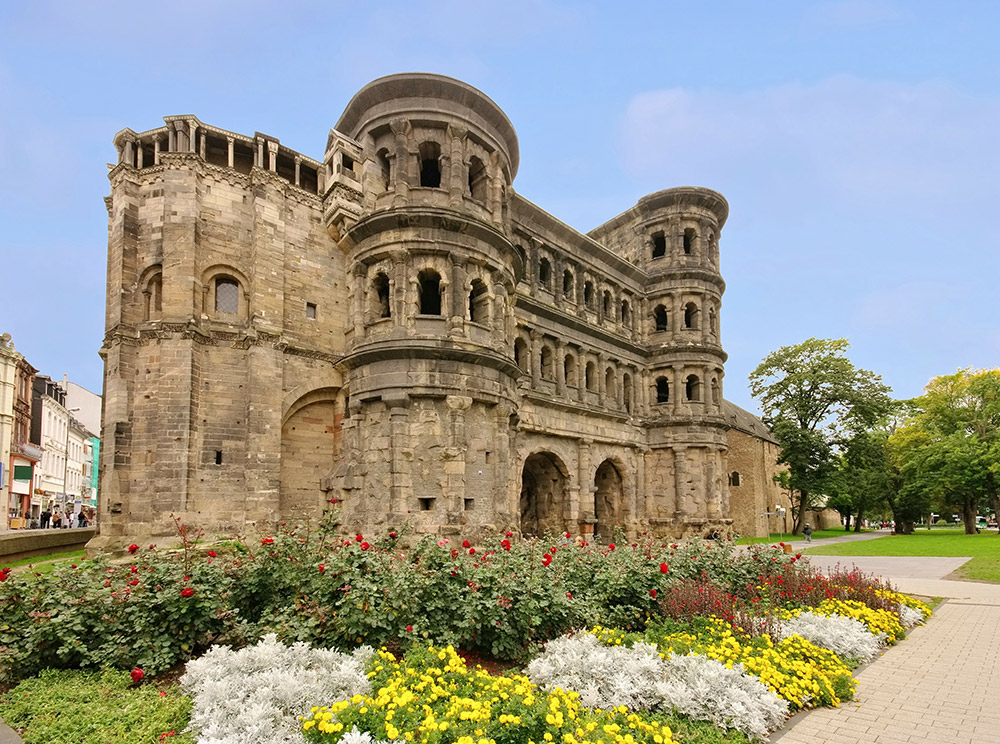
The city’s streets are adorned with archaeological treasures that reflect its illustrious past. The Trier Cathedral, dating back to the 4th century, is the oldest cathedral in Germany. The cathedral’s impressive architecture, blending Romanesque and Gothic styles, is captivating. Inside the cathedral, the Holy Robe of Jesus is displayed, and the magnificent cloister showcases statues of the city’s notable bishops. The cathedral is another UNESCO World Heritage Site.
The Roman Amphitheatre, impressively preserved, is located on the outskirts of the city, transporting visitors back to the days of gladiator battles and entertainment for the masses.
Rheinisches Landesmuseum Trier presents an extensive collection that narrates the region’s history. Featuring Roman artifacts, including the remarkable Trier Gold Hoard, as well as exhibitions on daily life, the museum provides a fascinating journey through the city’s history with engaging displays and interactive exhibits. Additionally, the museum showcases an impressive miniature model depicting Trier during the peak of the Roman era.
Day 5: The Moselle Valley
The Moselle River gracefully winds its way through landscapes resembling fairy tales. The combination of quaint towns, picturesque vineyards covering rolling hills, and the meandering river flowing into the Rhine creates a truly magical setting. Navigating through this idyllic region, where medieval castles preside over terraced vineyards, you feel like you’re in a storybook. Wine enthusiasts will find a paradise among the famous Riesling vineyards, planted on the steep slopes. Numerous wineries and wine shops await!
Next, we will head to the town of Cochem, passing through two charming towns: Bernkastel-Kues and Traben-Trarbach.
A drive of about 37 miles through winding paths surrounded by vineyards and medieval fortresses, brings us to Bernkastel-Kues. The town is adorned with half-timbered houses, cobblestone streets, and picturesque squares. The combination of Bernkastel’s medieval allure and its atmospheric surroundings create a captivating fusion steeped in centuries of rich history. Take a stroll or drive up to Landshut Castle, offering panoramic views of the town and the river. Here, you’ll also find the renowned Riesling wines cultivated on the steep terraced vineyards, enhancing the town’s charm.
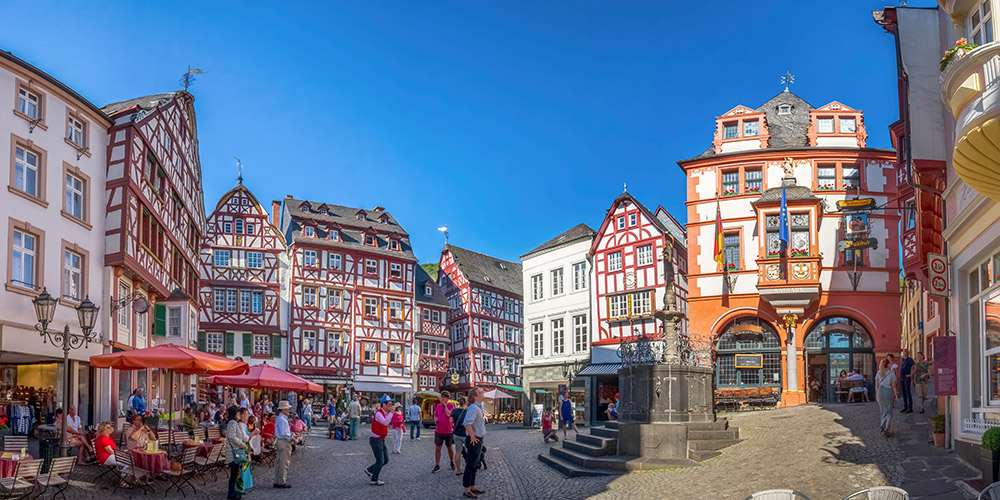
Continuing our journey from Bernkastel-Kues to Cochem, we will drive about 15 miles to Traben-Trarbach. This town boasts an unusual museum that showcases the local wine culture’s unique connection with Buddhism. The Buddha Collection is housed in a grand building that was once the Julius Caesar winery, constructed in the Art Nouveau style. Numerous paintings, sculptures, and other works of art guide visitors through a cultural journey that spans 2500 years.
Traveling another 31 miles along the scenic riverbanks will bring us to the town of Cochem. Dominated by Reichsburg Castle, perched majestically on a hill, Cochem provides breathtaking vistas of the Moselle Valley. There are guided tours available of the castle, a medieval architectural marvel. Descending on foot from the castle, you’ll see timber-framed houses, winding streets, and lively squares. A notable site is the Bundesbank Bunker, exposing remnants from the Cold War. The bunker served as a secret storage facility, holding 15 billion German marks in circulation. The guided tour is intriguing and sheds light on Germany’s strategies for safeguarding its monetary assets during uncertain times.
With a remaining distance of 37 miles, our journey continues towards Koblenz.
Day 6: Koblenz
Koblenz, strategically established by the Romans over two millennia ago, was named “Confluentes” due to the confluence of the Moselle and Rhine rivers. The city flourished, and it eventually became known as “Koblenz.” The Romans left a significant legacy, which is evident in landmarks like the monumental Basilica of St. Castor and remnants of defensive walls. As the Roman Empire declined, the city remained a significant trade center, maintaining its prominence along river routes and witnessing the rise of influential noble families. During the Holy Roman Empire, magnificent buildings and fortresses were added to the urban landscape, showcasing both military strength and architectural prowess.
By the late 18th and early 19th centuries, Koblenz fell under French rule. Under the leadership of Napoleon Bonaparte, Koblenz became part of the First French Republic and later, the Napoleonic Empire. The French period left an indelible mark on its cultural, administrative, and architectural landscape, noticeable to this day in its character, buildings, and even culinary traditions.
One of the city’s most iconic landmarks is the “Deutsches Eck,” a grand terrace situated at the confluence of the Moselle and Rhine rivers. Overlooking the imposing cathedral is the remarkable equestrian statue of Emperor Wilhelm I. This monument, dating back to the late 19th century and reconstructed after World War II, was erected in honor of Wilhelm I by his grandson, Wilhelm II.
On the opposite bank of the Rhine, proudly positioned, is the majestic Ehrenbreitstein Fortress, an historic stronghold. Initially a Roman fortress crucial for the defense of the city and surrounding region, it underwent expansions and renovations over centuries, evolving into an extensive military complex. Today, visitors can access it via a cable car, offering stunning panoramic views of the Deutsches Eck. The cable car station is a short stroll from Deutsches Eck.
The Ludwig Museum, situated near Deutsches Eck, exhibits a diverse collection of modern art by both local and international artists. The museum features a dynamic array of paintings, sculptures, and multimedia installations. Its rotating exhibitions provide a fresh outlook on artistic trends, delving into social themes and cultural innovations. In the museum’s courtyard and the internal passage to the Basilica of St. Castor, you will see historical remnants of Koblenz and a monument commemorating Napoleon’s campaigns in Russia.
Day 7: From Koblenz to Bingen – Rhine Valley
The Rhine Valley is a lovely region known for its breathtaking landscapes, charming villages, historic fortresses, and enchanting folklore. The picturesque scenery unfolds like a painting, with medieval castles perched on lush hills, vineyards, and the majestic Rhine River meandering through the valley. Villages adorned with timber-framed houses exude the charm of a bygone era, inviting visitors to explore the region’s rich heritage.
Departing from Koblenz, we will head towards the town of Boppard, a half-hour drive along the western bank of the Rhine. This charming town offers a delightful blend of history, natural beauty, and culture. Boppard’s ancient quarter, with well-preserved medieval architecture, features narrow streets and opulent houses that are reflected along the river promenade. The Roman origins of the town are evident in remnants such as the well-preserved Roman fortress walls, some integrated into modern structures. The 13th century Carmelite Church (Karmelitenkirche) showcases a fusion of Romanesque and Gothic architectural styles, providing a glimpse into the town’s medieval history.
From Boppard, the journey continues towards Bingen, covering approximately 28 miles along the Rhine’s western bank. Along the route, you will pass charming towns such as Sankt Goar, Oberwesel, and Bacharach. South of Sankt Goar, you can descend to the William Turner Route to view the Lorelei Rock. The Lorelei is a story steeped in charm, myth, and temptation, recounting the tale of the beautiful Lorelei whose celestial singing lured sailors to their treacherous fate in the turbulent waters, entranced by the enchanting melody along the river.
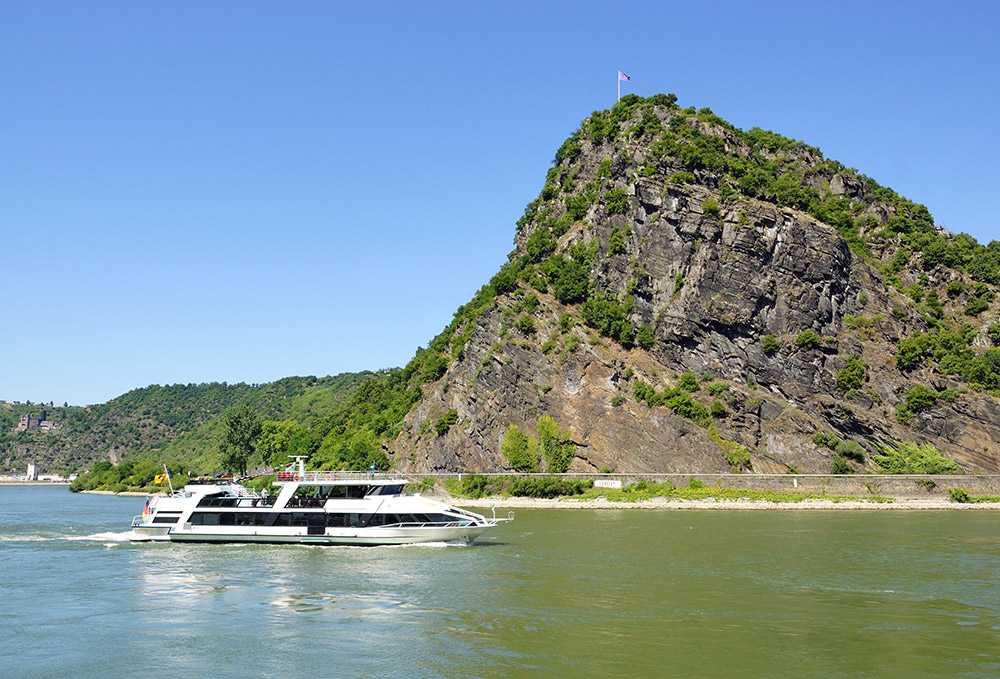
The Lorelei tale is immersed in allure, temptation, and mythology. Legend has it that the enchanting Lorelei sang celestial melodies that enticed sailors, leading them to perilous destinies in the tumultuous waters.
Continuing from Bingen, you can cross the river by ferry to reach the delightful town of Rüdesheim am Rhein. Leisurely stroll through its streets, savor the traditional Asbach coffee, explore the remarkable museum of rare musical instruments known as Siegfrieds Mechanisches Musikkabinett, and ascend the cable car above the vineyards to the hill’s peak to the grand Niederwald Monument. This monument commemorates the unification of Germany in the 19th century and offers a breathtaking panorama of the Rhine and the surrounding towns. From here, travel a distance of about 25 miles to reach our next destination, Mainz.
Day 8: Mainz
Mainz‘s heritage spans thousands of years, with its origins dating back to the Roman period when it was known as “Mogontiacum.” The city flourished as a Roman military stronghold and developed into a prominent religious center during the medieval era. The revolutionary invention of the printing press by Johannes Gutenberg, a native of Mainz, during the 15th century revolutionized the dissemination of knowledge, earning the city the title “Gutenberg City.”
Mainz has been witness to significant historical events, including various ruling dynasties, conflicts, and cultural transformations that have shaped its unique character and adorned it with architectural wonders. Notable among them is the Mainz Cathedral, a masterpiece of Romanesque architecture boasting a facade and spires crafted from red sandstone. The cathedral radiates grace, grandeur, and a rich historical past. A 15-minute walk leads to the 13th century St. Stephen’s Church, showcasing breathtaking stained glass windows by the artist Marc Chagall, which reveal their full splendor only in daylight.
The Gutenberg Museum pays tribute to Gutenberg’s invention of the printing press and is home to printing machines, rare books, and, in a dimly lit chamber, displays of extremely rare books, including original examples from the Gutenberg Bible.
Travel to Heidelberg to spend the next 2 nights.
Day 9: Heidelberg
Heidelberg‘s history is a tale of academic excellence and historical milestones. For over 800 years, this city, situated along the Neckar River, has witnessed the rise and fall of empires. The renowned Heidelberg University, founded in 1386, remains one of Germany’s oldest and prestigious universities, nurturing intellectuals, and attracting researchers from around the globe.
The old town, with its narrow streets and historical buildings, reveals the city’s medieval past. The Church of the Holy Spirit and the old bridge adorned with sculptures epitomize Heidelberg’s cultural heritage. Throughout generations, Heidelberg has been a center for cultural innovation, fostering the arts, literature, and philosophy.
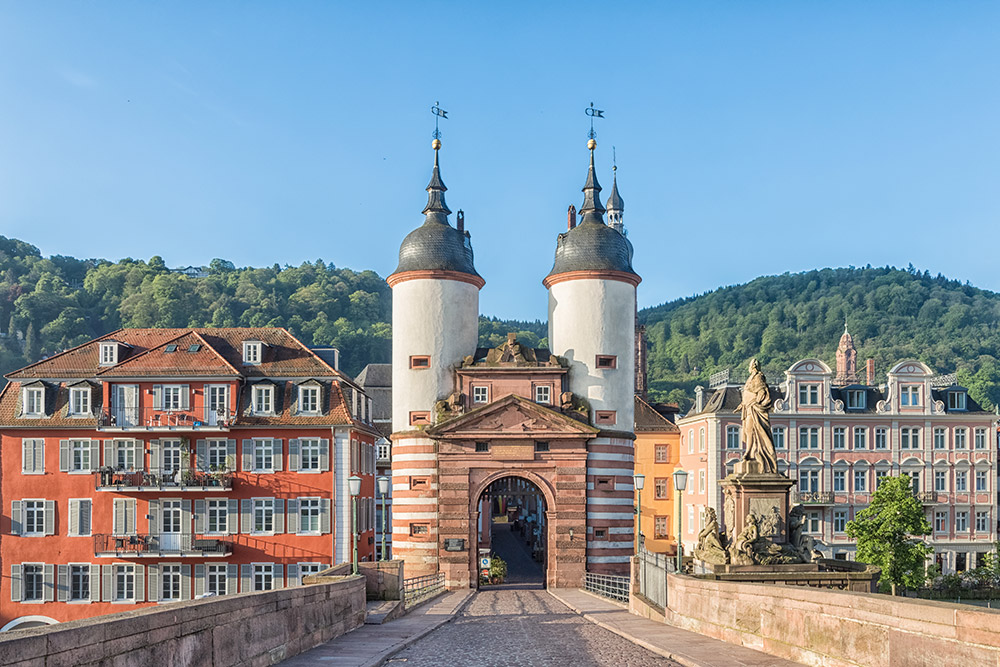
Perched majestically above the city is Heidelberg Castle, accessible by car, on foot, or via the funicular near the cathedral. The castle is an impressive symbol of the city’s historical and architectural grandeur, positioned on a hillside that overlooks both the city and the Neckar River. Originating in the 13th century, it served as the residence of the Electors for over five centuries. The castle’s architectural legacy, combining Gothic, Renaissance, and Baroque elements, is a testament to its glorious past.
The Friedrich Building, the giant wine barrel, and the Elizabeth Gate are among the prominent structures within the castle complex. Despite damage from fires and wars during the 18th century, which left parts of the castle in ruins, these incidents contributed to their romantic and picturesque charm. Today, visitors can explore the castle and visit the Apothecary Museum, displaying an impressive collection of tools, equipment, and furniture once used by German apothecaries.
Day 10: From Heidelberg to Stuttgart
A drive of approximately 50 miles on roads 27, 37, and 45 will lead us to the town of Bad Wimpfen. Perched on a hill overlooking the Neckar River, this well-preserved medieval town invites visitors to explore its charming streets. Adorned with wooden-fronted houses lining the winding cobblestone streets, Bad Wimpfen’s market square, a lively hub of activity, showcases the magnificent Town Hall and the Imperial Palace. The tower offers panoramic views, completing the picturesque scene. Bad Wimpfen also boasts wellness and health centers, offering indulgent treatments and thermal baths.
Continuing towards Stuttgart, a drive of about 37 miles will bring us to the outskirts of Ludwigsburg. The Ludwigsburg Palace is a Baroque masterpiece, displaying an outstanding blend of architectural elegance, historical richness, and meticulously landscaped gardens. This 18th century palace evokes a royal charm in its opulent halls, such as the Marble Hall and the Mirrored Hall. Guided tours reveal the palace’s famous history, offering glimpses into the lives of royalty while showcasing artistic wealth. The expansive palace gardens, featuring the charming Baroque Garden and the Garden of Legends, provide a scenic setting where you can meander amidst well-tended lawns, lively flower beds, and tranquil waterways.
